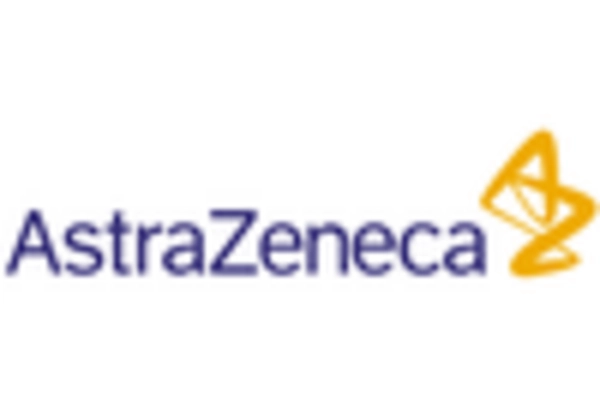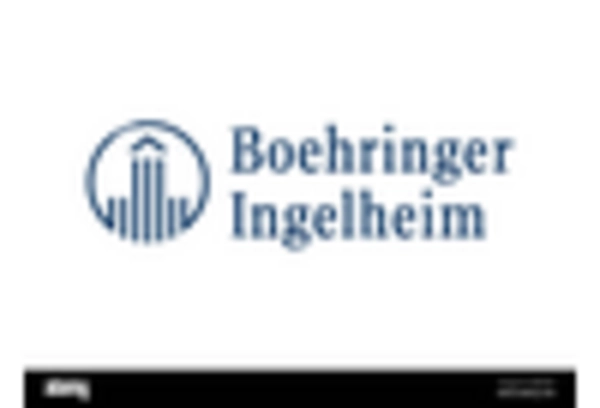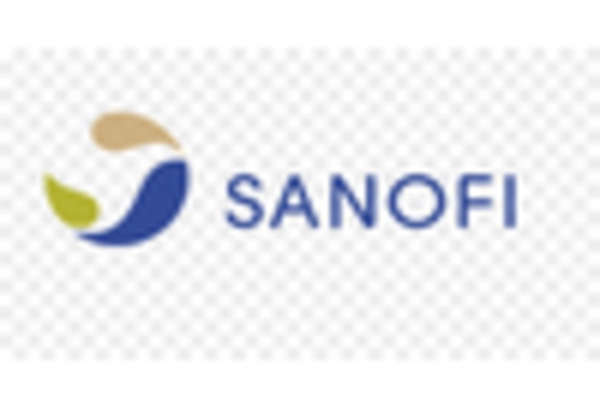Growing Prevalence of Dyspepsia
The increasing prevalence of dyspepsia in the US population is a primary driver for the dyspepsia market. Studies indicate that approximately 25% of adults experience dyspeptic symptoms at some point in their lives. This rising incidence is attributed to lifestyle factors such as poor diet, high-stress levels, and sedentary behavior. As more individuals seek treatment for their symptoms, the demand for dyspepsia-related products and services is likely to grow. The dyspepsia market is expected to expand as healthcare providers respond to this trend by offering a wider range of diagnostic and therapeutic options. Furthermore, the aging population, which is more susceptible to gastrointestinal disorders, contributes to the increasing market size, suggesting a sustained growth trajectory for the industry.
Integration of Dietary Supplements
The integration of dietary supplements into the management of dyspepsia is emerging as a significant driver in the dyspepsia market. Many consumers are turning to natural supplements, such as probiotics and digestive enzymes, to alleviate symptoms. This trend aligns with a broader shift towards holistic health approaches, where individuals seek complementary therapies alongside conventional treatments. Market data suggests that the dietary supplement segment is experiencing robust growth, as consumers increasingly prioritize preventive health measures. The dyspepsia market is likely to see a rise in product offerings that combine traditional medications with dietary supplements, catering to the evolving preferences of health-conscious consumers. This integration may enhance treatment efficacy and patient satisfaction.
Increased Access to Healthcare Services
The expansion of healthcare services in the US is a crucial driver for the dyspepsia market. Enhanced access to healthcare, including primary care and specialist services, allows more individuals to receive timely diagnoses and treatments for dyspepsia. The proliferation of urgent care centers and telehealth options has made it easier for patients to seek help for gastrointestinal issues. Market analysis indicates that this increased accessibility is likely to result in higher treatment rates and, consequently, a growing market for dyspepsia-related products. As healthcare systems adapt to meet the needs of a diverse population, the dyspepsia market stands to benefit from improved patient engagement and a more comprehensive approach to managing digestive health.
Advancements in Pharmaceutical Treatments
Innovations in pharmaceutical treatments for dyspepsia are significantly influencing the dyspepsia market. Recent developments in drug formulations, including proton pump inhibitors and H2-receptor antagonists, have improved the efficacy of dyspepsia management. The introduction of novel medications that target specific symptoms is likely to enhance patient outcomes and satisfaction. Market data indicates that the pharmaceutical segment accounts for a substantial share of the dyspepsia market, driven by ongoing research and development efforts. As new therapies emerge, healthcare providers are better equipped to address the diverse needs of patients, potentially leading to increased adoption of these treatments. This trend suggests a dynamic landscape where innovation plays a crucial role in shaping the future of the dyspepsia market.
Rising Awareness of Gastrointestinal Health
There is a notable increase in awareness regarding gastrointestinal health among the US population, which serves as a catalyst for the dyspepsia market. Educational campaigns and health initiatives have highlighted the importance of digestive health, prompting individuals to seek medical advice for dyspeptic symptoms. This heightened awareness is reflected in the growing number of consultations with healthcare professionals, as well as increased online searches for dyspepsia-related information. Market Research Future indicates that this trend is likely to drive demand for both over-the-counter and prescription treatments. As consumers become more proactive about their health, the dyspepsia market is expected to benefit from a more informed patient base, leading to greater engagement with healthcare services and products.

















Leave a Comment